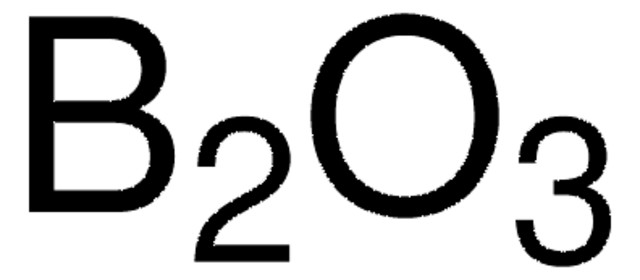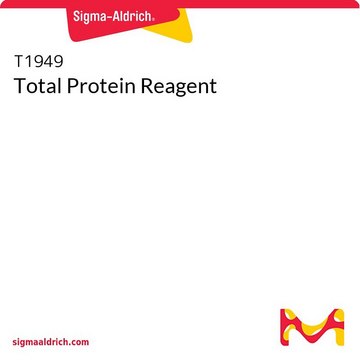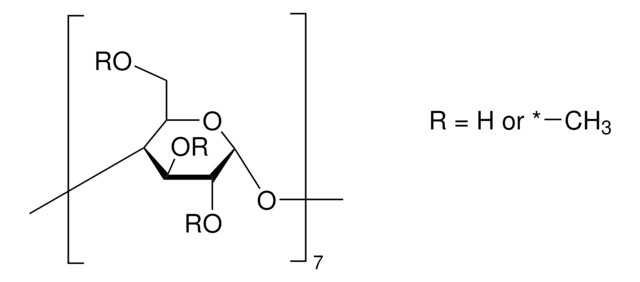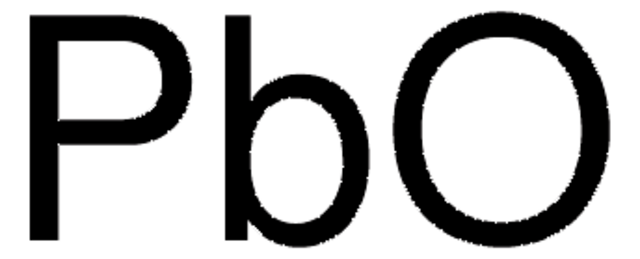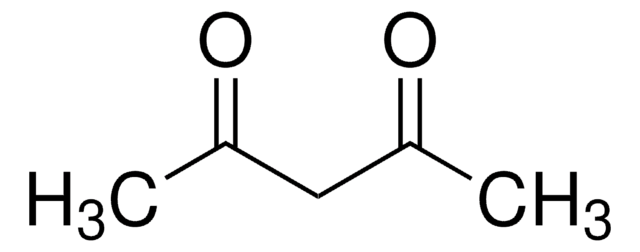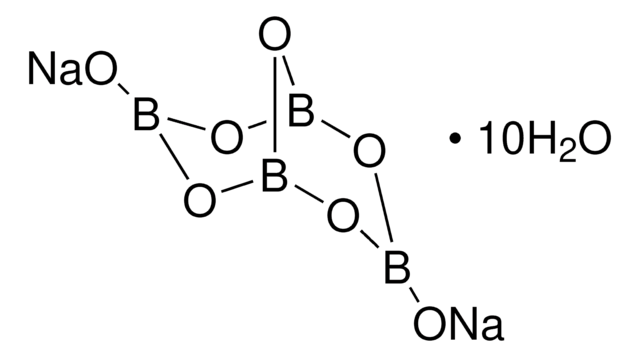15678
Boric anhydride
puriss. p.a., ≥98% (T)
Synonyme(s) :
Boron trioxide
About This Item
Produits recommandés
Densité de vapeur
>1 (vs air)
Niveau de qualité
Qualité
puriss. p.a.
Pureté
≥98% (T)
Forme
solid
Perte
≤3% loss on ignition, 900 °C
Pf
450 °C (lit.)
Densité
2.46 g/mL at 25 °C (lit.)
Traces d'anions
chloride (Cl-): ≤20 mg/kg
sulfate (SO42-): ≤50 mg/kg
Traces de cations
Ag: ≤5 mg/kg
Al: ≤50 mg/kg
Ba: ≤5 mg/kg
Bi: ≤5 mg/kg
Ca: ≤10 mg/kg
Cd: ≤5 mg/kg
Co: ≤5 mg/kg
Cr: ≤5 mg/kg
Cu: ≤5 mg/kg
Fe: ≤5 mg/kg
K: ≤30 mg/kg
Mg: ≤20 mg/kg
Mn: ≤5 mg/kg
Mo: ≤5 mg/kg
Na: ≤200 mg/kg
Ni: ≤5 mg/kg
Pb: ≤30 mg/kg
Sr: ≤5 mg/kg
Tl: ≤10 mg/kg
Zn: ≤5 mg/kg
Chaîne SMILES
O=BOB=O
InChI
1S/B2O3/c3-1-5-2-4
Clé InChI
JKWMSGQKBLHBQQ-UHFFFAOYSA-N
Vous recherchez des produits similaires ? Visite Guide de comparaison des produits
Description générale
Application
- Boron carbon nitride nanosheet (BCN) by thermal condensation reaction with urea and melamine.
- Boron-doped reduced graphene oxide (B-rGO) via a chemical vapor deposition method.
Autres remarques
Mention d'avertissement
Danger
Mentions de danger
Conseils de prudence
Classification des risques
Repr. 1B
Code de la classe de stockage
6.1D - Non-combustible acute toxic Cat.3 / toxic hazardous materials or hazardous materials causing chronic effects
Classe de danger pour l'eau (WGK)
WGK 1
Point d'éclair (°F)
Not applicable
Point d'éclair (°C)
Not applicable
Équipement de protection individuelle
dust mask type N95 (US), Eyeshields, Gloves
Faites votre choix parmi les versions les plus récentes :
Déjà en possession de ce produit ?
Retrouvez la documentation relative aux produits que vous avez récemment achetés dans la Bibliothèque de documents.
Les clients ont également consulté
Notre équipe de scientifiques dispose d'une expérience dans tous les secteurs de la recherche, notamment en sciences de la vie, science des matériaux, synthèse chimique, chromatographie, analyse et dans de nombreux autres domaines..
Contacter notre Service technique